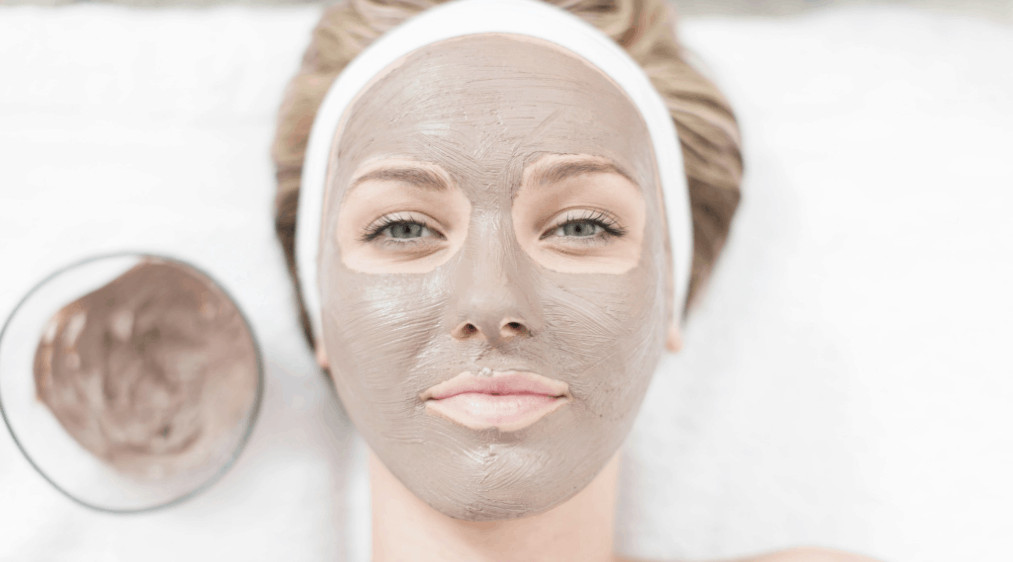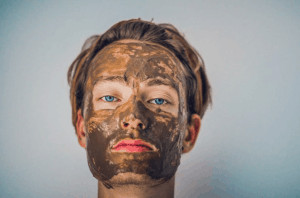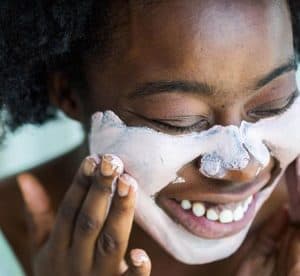Kaolin Clay Benefits Explained: Uses & DIY Skincare Mask

When I think of the word ‘clay’, I automatically think of pottery – from young children forming masks or cups, to experienced potters creating delicate and beautiful masterpieces. Indeed, kaolin clay has been, and still is, a very popular ingredient in pottery (though probably not for little kids). It has many uses beside pottery such as skin benefits even with the most sensitive of skin. Curious to know more about this versatile clay? Then read on and find out why its included in so many of your favorite products.
What Is Kaolin Clay?
Kaolin clay, also called simply kaolin (also called a whole host of other names), refers to rocks that are rich in the mineral kaolinite. It’s been used for yeas in ceramics and pottery, because of its beauty. Additionally, it’s also popular in paint, paper, and even toothpaste!
Kaolin is naturally a powder and when mixed with water it can create plastic. However, if combined with an adhesive to give paper a glossy shine and improve the quality of the colors and printing.
Ever wonder why porcelain is often called ‘china’? That’s because one of its main ingredients – yup, kaolin – was most abundantly found in (drumroll, please) China. Generally, the whiter the kaolin is, the higher the quality. Kaolin is often bleached to remove any coloring that additional minerals may have added.
Kaolin Clay Benefits Explained

Woman with kaolin clay face mask.
Kaolin clay is an ingredient in a variety of commercial products. So how can it be used on your body? And if so, what are the benefits that it can have for our health and well-being?
You may have noticed by now that a lot of skincare creams tend to be white in color. And that’s not just because this makes them aesthetically pleasing, although that does help. Many skin treatments include kaolin, and there’s a fair good few reasons why.
If you’re one of the many people in the world who suffer from oily skin (and all that comes along with it), you’ve most likely had a cream or two that contained kaolin. That’s because this ingredient, when mixed with water, is great at absorbing excess oil, making it ideal in cleansers, exfoliates and clay masks.
Besides absorbing sebum, it also draws out impurities from pores, which helps with exfoliating. Despite this, however, it’s still pretty gentle, which makes it suitable to be used even in a daily facial cleanser. This holds true for people with sensitive skin, as well. Pretty impressive for a single ingredient, am I right?
Kaolin is soothing, which makes it ideal for irritated skin, or skin issues like rashes. You can add kaolin to an oatmeal bath to help relieve itching or irritated skin.
But its purifying effects don’t only work for your skincare products – they work well for your hair and body, too. When added to shampoo, for instance, kaolin can draw out excess oil from your roots, as well as dirt, dead skin, and other impurities. In deodorant, as well, it draws out sweat and leaves you feeling fresh and clean.
Kaolin Clay vs. Bentonite Clay
Bentonite clay is super-absorbent, and made from volcanic ash. It actually has many of the same benefits as kaolin clay. For example, bentonite clay, like kaolin clay, is gentle, and suitable even for people with sensitive skin. Bentonite also has similar exfoliating properties to kaolin, and can help clear your pores. It can also heal skin irritation, just like kaolin.
Both types of clay have anti-ageing properties, as well. Kaolin clay improves blood circulation to your face, which in turn helps your skin cells to keep regenerating which helps you retain your youthful appearance. Bentonite clay, due to its healing properties, can smooth out your skin tone and naturally diminish wrinkles and fine lines.
Both these natural clays work well for cleansing, healing, and smoothing the skin. It’s your choice which to use; they are both great. The one advantage that kaolin has over bentonite clay is that it can create makeup products, such as eyeshadow or mineral blush. Otherwise, feel free to play around with both these clays and see which one works best for your skin.
DIY Kaolin Clay Mask Recipe

DIY face creams.
At MH, you’ve probably noticed our interest in all things DIY. That’s because, besides usually being more economical, making your own products at home ensures that you know exactly what goes into the stuff you put on your skin, and that no unknown nasties make their way onto your body. Plus, it’s always fun to use something that you had a hand in creating.
Face masks are always a good idea, as they provide extra moisturizer to your skin, whilst clearing it of excess oils and other impurities. This face mask recipe, adapted from the Hortus Cuisine blog, includes tea tree essential oil, which is known to have both anti-inflammatory and antimicrobial properties. Raw honey, as well, has strong antibacterial properties, which makes it awesome at fighting off acne.
You Will Need
- 1 tablespoon kaolin clay (powdered form)
- 5 drops tea tree essential oil
- 1 teaspoon chamomile, lemon and vanilla infused oil
- 1 teaspoon raw, organic honey
An herbal infusion of your choice. Make enough for a thick paste by boiling water with dried herbs, such as chamomile, ginger, or peppermint, and then straining off the mixture after having allowed it to steep.
Method
- To make the face mask, mix the powdered clay together with about 2 tablespoons of the herbal infusion.
- Allow the mixture to stand for 10 minutes. Mix well, and add more infusion if necessary (as stated above, it should turn to a thick paste, making it easy to spread over your face).
- Add remaining ingredients to the clay mixture, and mix to combine.
- Your face mask is ready! Plaster the mixture over your face, taking care to cover your skin but avoiding sensitive areas like your eyes and mouth. Leave it in place for 15 minutes (20 if your skin is especially oily).
- Rinse your face gently with warm water, and apply your regular moisturizer.
Where To Buy Kaolin Clay
Kaolin clay is not hard to come by, especially in the age of the internet, where it’s as easy as googling it and following the results. You can find it on smaller internet stores, as well as large online retailers like Amazon. Keep in mind that the clay is quite light. It might sound like you aren’t ordering a lot, but don’t be surprised if you find a large package (or packages) at your door.
Conclusion
Anything that has been used for so long and is still popular today speaks for itself. Remember that kaolin clay is not only used for ceramics, as it was many years ago. Today it has become irreplaceable in many different products. Have a look through all your skincare products – if you have oily skin, it’s quite likely that you’ve been loving kaolin clay all along without knowing it! And if DIY is your thing, don’t wait to try out the kaolin clay face mask. Your skin will thank you for it!


